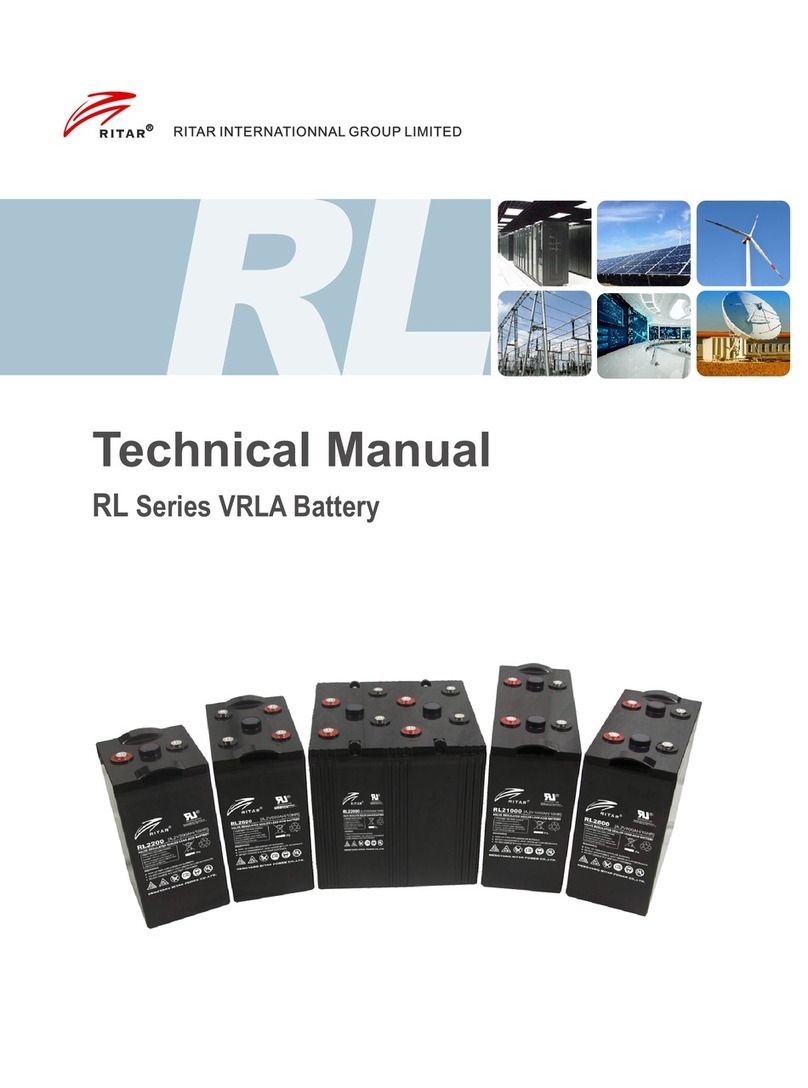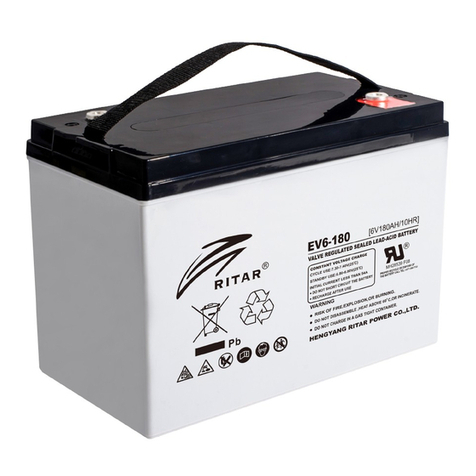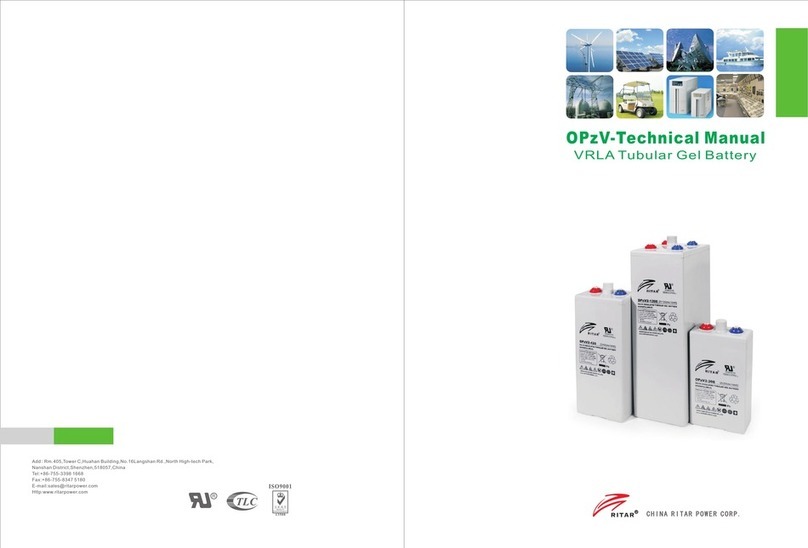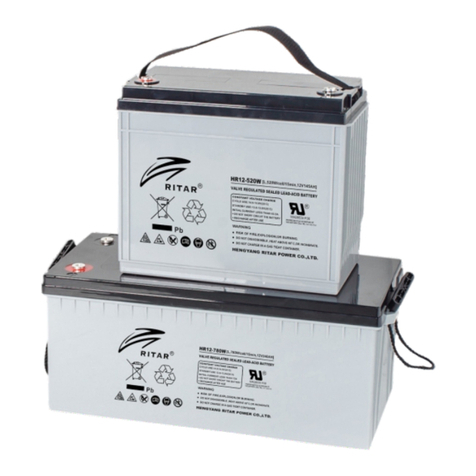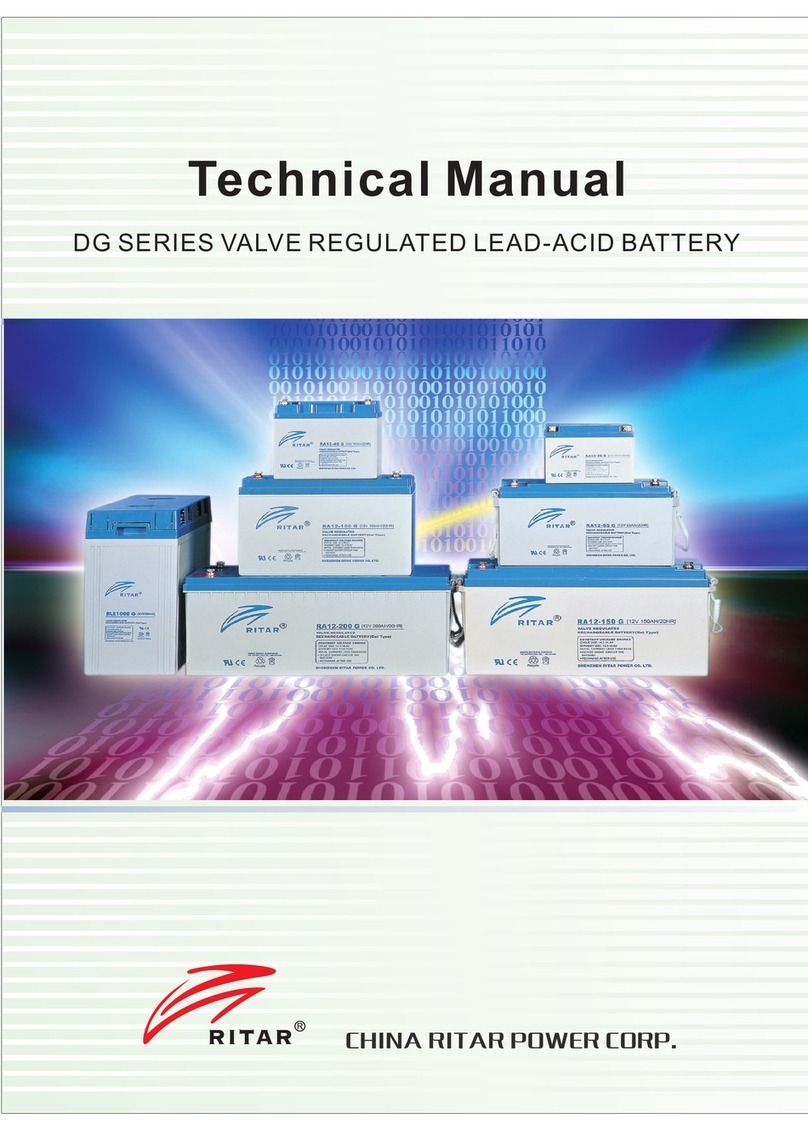
0.0 4
0.0 8
0.1 2
0.1 6
0.2 0
0.2 4
0.2 8
7 Battery Charge, Discharge & Life
1. Charge Characteristics
Charge condition is one of the most important factors in
battery use. The battery performance and service
life are directly related to its charging methods
and charging parameters in using. The battery is
recommended to be charged at the temperature
range of 5-30℃ . At any temperature lower than 5℃
or higher than 35℃ it will cause undercharge or
overheating and then decrease the battery life.
2. Charge Curve of Float Use
3. Relationship between Float Charge Voltage and Environment Temperature
At general temperature (5℃~30℃ ), float charge voltage is 2.25V~2.30V. The batteries for float
charge service adopt the constant voltage but limited current method. The initial current is
0.1 and the maximum current is 0.2 .
1) At 25℃, the float charge voltage of battery is 2.27V per cell.
2) When the ambient temperature changes, the float charge voltage should be adjusted. The
temperature compensation coefficient is -3Mv/ , i.e., Ufloat=「2.27 – 0.003(t-25)」* n.
C A C A
2o 20
℃
Charge Characteristic Curve of Float Use
Charge Volume (%)
Charge Current (A)
Charge Voltage (V)
Charge Time (Hr)
Charge Voltage
Charge Volum e
Discharge
Charg e with
& Limit ed Curren t :
Charg e Voltage: 2 .30V/Cell
Charg e Current : 0.2
Const ant Voltag e
C A
20
Tempera ture: 25℃/77℉
4
In the process of using batteries, due to the individual differences and temperature differences of batteries,
long term floating charge operation will result in unbalanced battery terminal voltage (backward battery). In
order to avoid the deterioration of this imbalance trend, it is necessary to increase the charging voltage of
the battery bank and charge the battery bank to equalize the whole battery bank. Proper equalizing voltage
and equalizing frequency are the basis of long life and reliability of battery. Equalizing charge is not
recommended in the normal use of VRLA batteries, because equalizing charge will increase water loss and
grid corrosion, which will cause early failure.
Equalizing charge requirements for RITAR battery are as follows:
※ The equalizing charging voltage is related to the ambient temperature. The equalizing charging voltage
of single cell is 2.35v-2.45v/cell at 25 ℃. If the temperature changes, adjust the equalizing voltage in
time, and the equalizing voltage temperature compensation coefficient is - 4MV /℃.
※Equalize charge batteries 1 time after three months of fully float charge operation according to the
specified voltage. Discharge batteries 100% before equalizing charge.
※Equalizing charge setting: equalizing charge voltage is 2.35~2.45V/cell @25℃ and equalizing charge
time is 12 or 24 hours (when the charge current at the end stable about 2~3 hours ,stop equalize and
switch to float ).
※Under special circumstances, if the battery is cycle used continuously for more than 20 times, it needs
to be equalize charged once.
※In the battery bank, if there is a backward battery, and the single voltage is lower than 2.18V in floating
charge state; or after the battery is replaced in the battery bank, it needs equalizing charge.
4. Equalizing Charge Parameters






